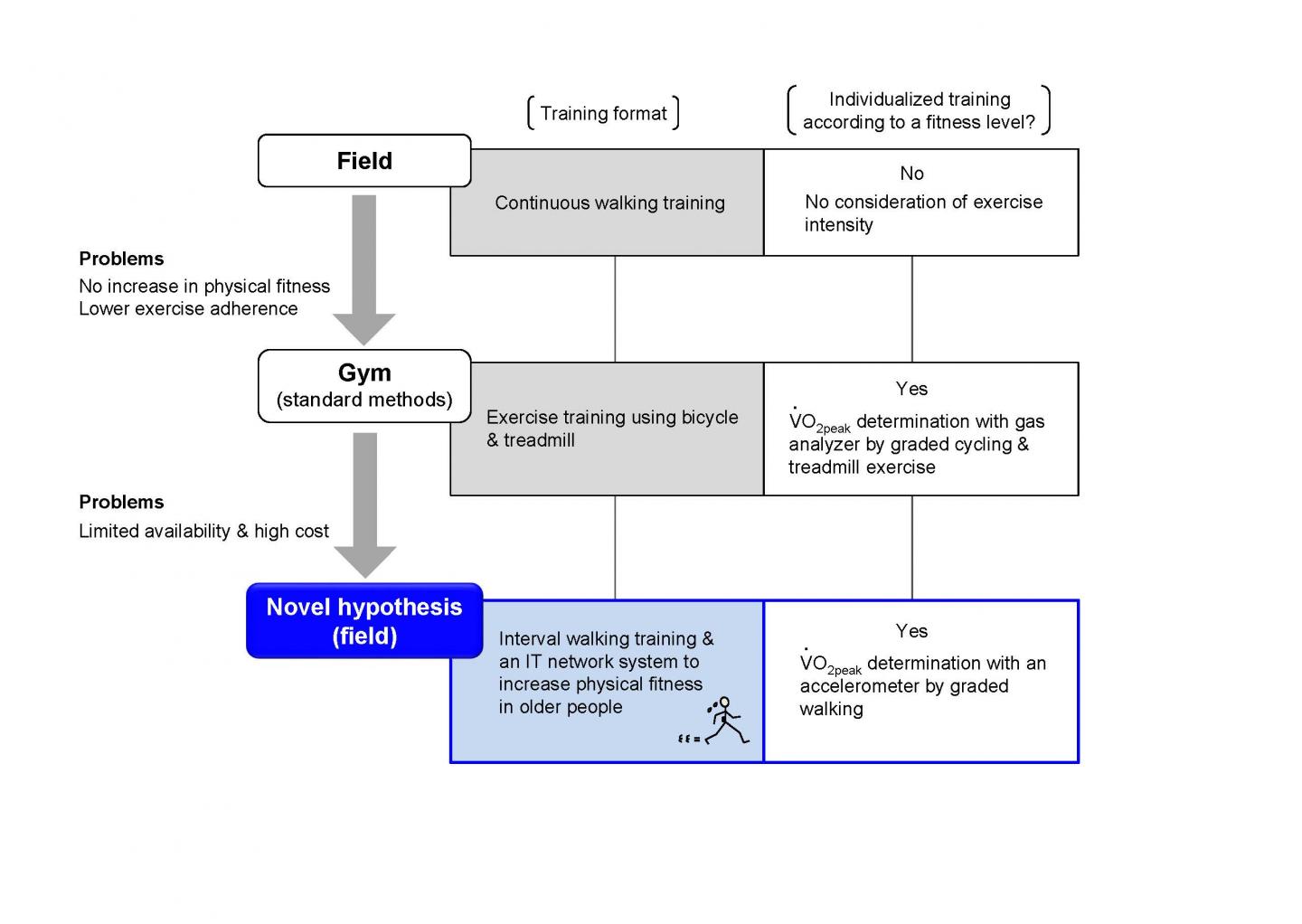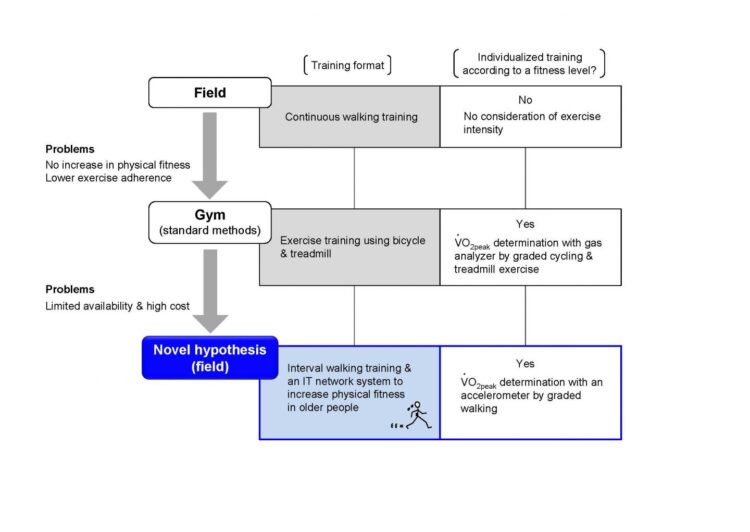
Credit: Copyright © 2020 American Physiological Society
A common notion is to walk 10,000 steps a day to improve ones’ physical fitness, so pedometers have been a popular wearable health device from before the days of fitness trackers and smartphones. However, simply walking 10,000 steps does not improve physical fitness or improve lifestyle-related illnesses. The international standard of improving physical fitness is to measure the maximum oxygen intake and to have the individual work at more than 60% of that. Interval training uses an individuals’ peak aerobic capacity to efficiently and effectively improve physical fitness. However, this requires going to the gym and training with a machine on a regular basis, which is both time consuming and costly. Therefore, a team at Shinshu University led by Dr. Shizue Masuki who was a part of Dr. Hiroshi Nose’s group (also of Shinshu University and corresponding author of this study) that developed Interval walking training (IWT) in an earlier study set out to see whether physical fitness could be easily determined and exercise intensity during training could be continuously monitored in the field without going to the gym.
The team developed a training system using the internet of things (IoT) to motivate and track the exercise intensity levels of the trainees. The team found that with five months of training, a group with an average age of 63 were able to increase their physical fitness back to a level 10 years younger than they previously scored before the exercise protocol. Expensive machines and gyms are not necessary to achieve these results. With the use of triaxial accelerometer and the “3-step step-up walking method”, researchers are able to measure physical fitness accurately and monitor exercise intensity during training. The method to increase physical fitness to a level 10 years younger utilizes the IWT, to walk at a speed of more than 70% of maximum effort for 3 minutes, and switch to a 40% capacity for another 3 minutes and repeat. To increase physical fitness, the key is the amount of time spent walking at a level of 70% or more, which the walker feels is sufficiently strenuous.
Dr. Shizue Masuki states, “the importance of high-intensity exercise has now been recognized even among middle-aged and elderly people, but at the time of its development, the emphasis was placed on the amount of exercise using a pedometer, and the concept of the “intensity of exercise” was not understood or appreciated. It was very difficult in the beginning to get a paper published with this approach.”
However, she states that, “with this IoT system, it is possible to measure physical fitness, prescribe an individual exercise program without constant contact, and monitor energy expenditure at every training session throughout an intervention period.” They were able to conduct a dietary survey remotely and create an appropriate nutritional supplement protocol based on their exercise data and blood tests. They even discovered “exercise training responsive genes” through the study.
Recently, with the help of AMED, a Japanese fund promoting integrated research and development in the field of medicine, Dr. Masuki has succeeded in developing a smartphone app that enhances the versatility of their system. Using this application, they aim to build a database of tens of thousands on the effect of IWT. They expect not only will the verification of lifestyle-related disease improvement by exercise training be accelerated, but so will the verification of the combined use of health foods, more easily than before. Furthermore, they aim to apply IWT to a wide range of clinical medicine applications.
There are currently 8,700 participants of the IoT IWT throughout Japan, and the number is increasing. This system greatly reduces the cost of healthcare and standard exercise regimen (IWT is only 13% of standard costs) and the smartphone app will only reduce this cost even more. This technology greatly improves the motivation of participants to train at high-intensity, contributing to the long-standing health improvement of populations.
Dr. Masuki and her colleagues hopes to now establish a new preventive medicine centered on exercise. Through the development of this IoT system, she and her team would like to shift from “therapeutic medicine” to “preventive medicine”.
###
Acknowledgements
This research was supported in part by the Shinshu University Partnership Project between Shinshu University; Jukunen Taiikudaigaku Research Center; the Ministry of Education, Culture, Sports, Science, and Technology of Japan; and Matsumoto City. This research was also supported by the Ministry of Health, Labor and Welfare of Japan (H17- Chohju-Ippan-016), and the Japan Society for the Promotion of Science (18H04083, 18H03147).
IWT was previously introduced in the press release, “Quality over quantity! Interval walking training improves fitness and health in elderly individuals” Dr Shizue Masuki has shown that Interval walking training (IWT) greatly improves the health outcome of walking training.
https:/
Media Contact
Hitomi Thompson
[email protected]
Related Journal Article
http://dx.





